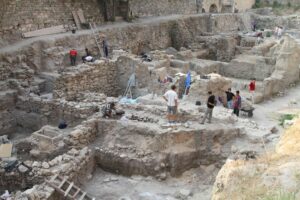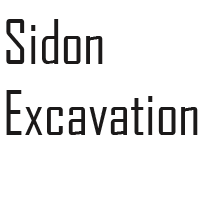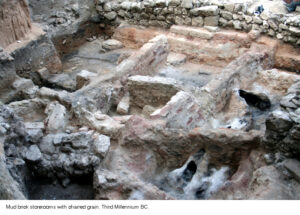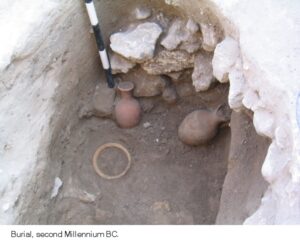The first organized archaeological excavation in the city started in 1914 under the direction of a French archaeologist Georges Contenau. Throughout the 1914 and 1920 excavation, work concentrated around the land castle built on the ancient tell of Sidon (number 1 on the map)

Sidon Excavation – Working area
In 1969, excavation undertaken by another French archaeologist Maurice Dunand moved to an adjacent site, an area 5000 sq. m east of the castle (number 2 on the map) where he found the remains of a Roman bath.
North of the castle, Dunand chose another area of about 6500 sq. m. for soundings (number 3 on the map). This is the “college site,” named after an America school (the Gerard Institute) that was demolished between 1961 and 1963. The excavations undertaken by both archaeologists have not proven conclusive.Descriptions of various archaeological deposits and architectural features were published in five articles by Contenau but they lack the method of excavation that has become common place today, namely the special attention given to archaeological layers and their relation to existing structures.
The few sherds published by him do not attempt in any way to relate their relative chronological position in accordance to the site’s stratigraphy. As for Dunand, he only gives a brief synopsis of his work in a short preliminary article without publishing his excavation of the Roman bath.


